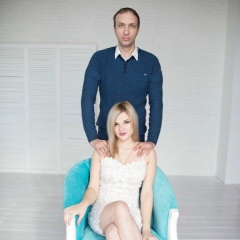1. Самый ранний вариант был найден в Древнем Египте – там была сказка о прекрасной проститутке, которая купалась в реке, а орел в это время украл ее сандалию и принёс фараону. Сандалия была такой маленькой, что фараон тут же объявил розыск. И Фодорис (Золушку) нашли. Мало того, фараон тут же на ней женился.
2. Сказку (в том или ином варианте) рассказывали в Испании, Риме, Венеции, Флоренции, Ирландии, Шотландии, Швеции, Финляндии… Следовательно, сказка о падчерице зародилась в те времена, когда люди свободно кочевали по европейскому континенту, от стоянки к стоянке.
3. Конечно, Золушка каменного века торопилась не на бал, а на какой-нибудь скромный праздник. И туфелька, которую она потеряла, была не хрустальной, а деревянной, матерчатой, меховой… Однако везде прослеживается миф, легший в основу сказки – туфелька была связана со священными обрядами.
4. Имя героини – Cinderella, Aschenputtel, Cenerentola, The Cinder Maid, Pepeljuga, Папялушка, Золушка – у всех народов связано с золой, пеплом. Оно говорит о принадлежности к огню, жрицей которого могла быть только самая добрая и чистая представительница племени. Отсюда прозвища, которые дают Золушке ее сестры: замарашка, грязнуля.
5. Помощники Золушки – прямое указание на то, в какого покровителя верило племя. Здесь и волшебное существо (фея), и умерший предок (белая птичка), и мыши, помогающие перебирать зерно (последние много древнее тех, в которых появляются феи).
6. Связь между потерянной туфелькой и последующей свадьбой для людей древности не содержала в себе новизны, т.к. обувь в свадебный обрядах означала помолвку или саму свадьбу. Разделение пары обуви указывало на разлуку влюбленных или на поиск партнера.
[]7. После великих географических открытий, когда европейцы стали изучать культуру других народов, выяснилось, что история о девушке, потерявшей туфельку, хорошо известна и на других континентах. Например, в корейской народной сказке Золушкой была четырнадцатилетняя девочка Кхончхи. Бедная падчерица по приказу мачехи перебирала просо и рис, рыхлила деревянной тяпкой каменистое поле и проливала много слез. Но однажды перед ней появилась небожительница, которая помогла управиться с делами и отправила её на чью-то свадьбу. Перепрыгивая через ручей, Кхончхи уронила в воду котсин (матерчатую туфельку, расшитую узорами), который нашёл камса – начальник провинции. Он приказал найти владелицу этой туфельки, объявив, что хочет на ней жениться.
На сегодняшний день подсчитано, что сказка существует в нескольких сотнях вариантов. Самые известные пересказы следующие...
«Золушка» итальянского поэта и сказочника Джамбаттиста Базиле (1575–1632)
Он написал сказку за 61 год до Перро, она вошла в сборник «Сказка сказок» (1634).
У Джамбаттиста Базиле Золушку звали Зезолла. Сговорившись с няней, девушка крышкой сундука сломала мачехе шею, потом уговорила отца жениться на няне. Однажды девушку увидел король и влюбился. Он послал слугу отыскать Зезоллу, и, борясь с ним, девушка потеряла пианеллу – похожую на ходулю галошу с подошвой из пробки (именно такую обувь носили женщины Неаполя времен Ренессанса). Юный король отправил гонцов, которые объехали все королевство и каждой женщине примеряли найденную пианеллу. Зезоллу, конечно, нашли.
«Золушка» Шарля Перро (1697 г.)
Шарль Перро и братья Гримм были знакомы с «Пентамероном» и, видимо, опирались на него, создавая свои сборники сказок.
В сказке Перро была хрустальная туфелька и самый щадящий для детского слуха сюжет (всем нам известный).
«Золушка» братьев Гримм
У богача умирает жена. Появляется мачеха с дочерьми. Отец едет на ярмарку и спрашивает, что привезти дочери и падчерицам. Падчерицы просят дорогих платьев и драгоценных камней, а Золушка – ветку, которая первой зацепит его за шапку. Ветку орешника Золушка посадила на могиле матери и поливала слезами. Выросло красивое дерево. Золушка трижды в день приходила к дереву, плакала и молилась; и каждый раз прилетала белая птичка. Когда Золушка рассказала о желании поехать на бал, птичка сбросила ей роскошное платье и туфли (три бала и три варианта нарядов). Принц влюбился в девушку, но ей всякий раз удавалось ускользнуть.
Дальше начинаются страшилки.
Когда гонцы примеряли туфельку, одна из сестёр отрезала палец. Принц забрал её с собой, но обнаружилось, что башмачок в крови. Принц повернул назад. То же повторилось с другой сестрой, только та отрезала пятку. Золушке башмачок приходится впору, и принц объявляет её своей невестой. Когда пришло время справлять свадьбу, сёстры решили быть рядом. Старшая встала по правую руку от невесты, младшая – по левую. Так и пошли в церковь. По дороге голуби выклевали каждой из них по глазу. Когда возвращались из церкви, старшая шла по левую руку, младшая по правую. Тут опять налетели на них голуби и выклевали ещё по глазу.
Так сёстры были наказаны за свою злобу (видимо, мораль такова: не зарься на чужое).
2. Сказку (в том или ином варианте) рассказывали в Испании, Риме, Венеции, Флоренции, Ирландии, Шотландии, Швеции, Финляндии… Следовательно, сказка о падчерице зародилась в те времена, когда люди свободно кочевали по европейскому континенту, от стоянки к стоянке.
3. Конечно, Золушка каменного века торопилась не на бал, а на какой-нибудь скромный праздник. И туфелька, которую она потеряла, была не хрустальной, а деревянной, матерчатой, меховой… Однако везде прослеживается миф, легший в основу сказки – туфелька была связана со священными обрядами.
4. Имя героини – Cinderella, Aschenputtel, Cenerentola, The Cinder Maid, Pepeljuga, Папялушка, Золушка – у всех народов связано с золой, пеплом. Оно говорит о принадлежности к огню, жрицей которого могла быть только самая добрая и чистая представительница племени. Отсюда прозвища, которые дают Золушке ее сестры: замарашка, грязнуля.
5. Помощники Золушки – прямое указание на то, в какого покровителя верило племя. Здесь и волшебное существо (фея), и умерший предок (белая птичка), и мыши, помогающие перебирать зерно (последние много древнее тех, в которых появляются феи).
6. Связь между потерянной туфелькой и последующей свадьбой для людей древности не содержала в себе новизны, т.к. обувь в свадебный обрядах означала помолвку или саму свадьбу. Разделение пары обуви указывало на разлуку влюбленных или на поиск партнера.
[]7. После великих географических открытий, когда европейцы стали изучать культуру других народов, выяснилось, что история о девушке, потерявшей туфельку, хорошо известна и на других континентах. Например, в корейской народной сказке Золушкой была четырнадцатилетняя девочка Кхончхи. Бедная падчерица по приказу мачехи перебирала просо и рис, рыхлила деревянной тяпкой каменистое поле и проливала много слез. Но однажды перед ней появилась небожительница, которая помогла управиться с делами и отправила её на чью-то свадьбу. Перепрыгивая через ручей, Кхончхи уронила в воду котсин (матерчатую туфельку, расшитую узорами), который нашёл камса – начальник провинции. Он приказал найти владелицу этой туфельки, объявив, что хочет на ней жениться.
На сегодняшний день подсчитано, что сказка существует в нескольких сотнях вариантов. Самые известные пересказы следующие...
«Золушка» итальянского поэта и сказочника Джамбаттиста Базиле (1575–1632)
Он написал сказку за 61 год до Перро, она вошла в сборник «Сказка сказок» (1634).
У Джамбаттиста Базиле Золушку звали Зезолла. Сговорившись с няней, девушка крышкой сундука сломала мачехе шею, потом уговорила отца жениться на няне. Однажды девушку увидел король и влюбился. Он послал слугу отыскать Зезоллу, и, борясь с ним, девушка потеряла пианеллу – похожую на ходулю галошу с подошвой из пробки (именно такую обувь носили женщины Неаполя времен Ренессанса). Юный король отправил гонцов, которые объехали все королевство и каждой женщине примеряли найденную пианеллу. Зезоллу, конечно, нашли.
«Золушка» Шарля Перро (1697 г.)
Шарль Перро и братья Гримм были знакомы с «Пентамероном» и, видимо, опирались на него, создавая свои сборники сказок.
В сказке Перро была хрустальная туфелька и самый щадящий для детского слуха сюжет (всем нам известный).
«Золушка» братьев Гримм
У богача умирает жена. Появляется мачеха с дочерьми. Отец едет на ярмарку и спрашивает, что привезти дочери и падчерицам. Падчерицы просят дорогих платьев и драгоценных камней, а Золушка – ветку, которая первой зацепит его за шапку. Ветку орешника Золушка посадила на могиле матери и поливала слезами. Выросло красивое дерево. Золушка трижды в день приходила к дереву, плакала и молилась; и каждый раз прилетала белая птичка. Когда Золушка рассказала о желании поехать на бал, птичка сбросила ей роскошное платье и туфли (три бала и три варианта нарядов). Принц влюбился в девушку, но ей всякий раз удавалось ускользнуть.
Дальше начинаются страшилки.
Когда гонцы примеряли туфельку, одна из сестёр отрезала палец. Принц забрал её с собой, но обнаружилось, что башмачок в крови. Принц повернул назад. То же повторилось с другой сестрой, только та отрезала пятку. Золушке башмачок приходится впору, и принц объявляет её своей невестой. Когда пришло время справлять свадьбу, сёстры решили быть рядом. Старшая встала по правую руку от невесты, младшая – по левую. Так и пошли в церковь. По дороге голуби выклевали каждой из них по глазу. Когда возвращались из церкви, старшая шла по левую руку, младшая по правую. Тут опять налетели на них голуби и выклевали ещё по глазу.
Так сёстры были наказаны за свою злобу (видимо, мораль такова: не зарься на чужое).
1. The earliest version was found in Ancient Egypt - there was a fairy tale about a beautiful prostitute who bathed in a river, and at that time the eagle stole her sandal and brought it to the pharaoh. Sandal was so small that the pharaoh immediately declared a wanted list. And Fodoris (Cinderella) found. Moreover, the pharaoh immediately married her.
2. A fairy tale (in one form or another) was told in Spain, Rome, Venice, Florence, Ireland, Scotland, Sweden, Finland ... Therefore, the fairy tale of the stepdaughter originated in those days when people roamed freely on the European continent, from parking to parking .
3. Of course, the Cinderella of the Stone Age was in a hurry not to a ball, but to some modest holiday. And the shoe that she lost was not crystal, but wooden, cloth, fur ... However, the myth that forms the basis of the tale is everywhere traced - the shoe was associated with sacred rites.
4. The name of the heroine - Cinderella, Aschenputtel, Cenerentola, The Cinder Maid, Pepeljuga, Papyalushka, Cinderella - is associated with ash and ash among all peoples. It speaks of belonging to a fire, the priestess of which could be only the kindest and purest representative of the tribe. Hence the nicknames that give her sister's Cinderella: dumb, dirty.
5. Cinderella's assistants - a direct indication of which patron the tribe believed in. Here is a magical creature (fairy), and a deceased ancestor (white bird), and mice that help sort out grain (the latter are much older than those in which fairies appear).
6. The connection between the lost shoe and the subsequent wedding for the people of antiquity did not contain any novelty, because shoes in wedding ceremonies meant the engagement or the wedding itself. The separation of a pair of shoes indicated the separation of lovers or the search for a partner.
[] 7. After great geographical discoveries, when Europeans began to study the culture of other nations, it turned out that the story of a girl who lost her shoe was well known on other continents. For example, in a Korean folk tale, Cinderella was a fourteen-year-old Khonghi girl. By order of her stepmother, the poor stepdaughter sorted out millet and rice, loosened a rocky field with a wooden chopper and shed many tears. But one day a celestial woman appeared in front of her, who helped her manage her affairs and sent her to someone else's wedding. Jumping over the stream, Khonghi dropped the kotsin (a cloth shoe embroidered with patterns) into the water, which was found by anchor - the head of the province. He ordered the owner of the shoe to be found, announcing that he wanted to marry her.
Today it is estimated that a fairy tale exists in several hundred options. The most famous retellings are as follows ...
“Cinderella” by the Italian poet and storyteller Jambattista Basile (1575–1632)
He wrote a fairy tale 61 years before Perrault, she was included in the collection "Tale of Tales" (1634).
Jambattist Basile Cinderella was called Zezolla. Having conspired with the nanny, the girl with the lid of the chest broke her stepmother's neck, then persuaded her father to marry the nanny. Once the king saw the girl and fell in love. He sent a servant to find Zezollah, and, struggling with him, the girl lost a pianella - a stilted galosha with a cork sole (these are the shoes worn by the women of Naples of the Renaissance). The young king sent messengers who traveled all over the kingdom and tried on the found pianella for each woman. Zezollah, of course, was found.
The Cinderella by Charles Perrault (1697)
Charles Perrault and the Brothers Grimm were familiar with the Pentameron and, apparently, relied on him, creating their own collections of fairy tales.
In the tale of Perrault, there was a crystal shoe and the most sparing story for children’s ears (we all know).
The Cinderella Brothers Grimm
The rich man’s wife dies. A stepmother with her daughters appears. The father goes to the fair and asks what to bring to his daughter and stepdaughters. The stepdaughters ask for expensive dresses and precious stones, and Cinderella asks for the branch that will hook him first. A branch of hazel Cinderella planted on her mother’s grave and watered with tears. A beautiful tree has grown. Cinderella came to a tree three times a day, cried and prayed; and every time a white bird flew in. When Cinderella spoke about her desire to go to the ball, the birdie threw her a luxurious dress and shoes (three balls and three variants of dresses). The prince fell in love with the girl, but every time she managed to slip away.
Then the horror stories begin.
When the messengers tried on a shoe, one of the sisters cut off her finger. The prince took her with him, but it turned out that the shoe was in the blood. The prince turned back. The same thing happened with the other sister, only she cut off the heel. Cinderella's shoe fits just fine, and the prince declares her his bride. When it was time to celebrate the wedding, the sisters decided to be near. The eldest stood on the right hand of the bride, the youngest on the left. So we went to church. On the way, pigeons pecked each of them in the eye. When they returned from the church, the eldest walked on the left hand, the younger on the right. Here again the pigeons came flying over them and pecked them over the eye.
So the sisters were punished for their anger (apparently, the moral is this: do not look into someone else's).
2. A fairy tale (in one form or another) was told in Spain, Rome, Venice, Florence, Ireland, Scotland, Sweden, Finland ... Therefore, the fairy tale of the stepdaughter originated in those days when people roamed freely on the European continent, from parking to parking .
3. Of course, the Cinderella of the Stone Age was in a hurry not to a ball, but to some modest holiday. And the shoe that she lost was not crystal, but wooden, cloth, fur ... However, the myth that forms the basis of the tale is everywhere traced - the shoe was associated with sacred rites.
4. The name of the heroine - Cinderella, Aschenputtel, Cenerentola, The Cinder Maid, Pepeljuga, Papyalushka, Cinderella - is associated with ash and ash among all peoples. It speaks of belonging to a fire, the priestess of which could be only the kindest and purest representative of the tribe. Hence the nicknames that give her sister's Cinderella: dumb, dirty.
5. Cinderella's assistants - a direct indication of which patron the tribe believed in. Here is a magical creature (fairy), and a deceased ancestor (white bird), and mice that help sort out grain (the latter are much older than those in which fairies appear).
6. The connection between the lost shoe and the subsequent wedding for the people of antiquity did not contain any novelty, because shoes in wedding ceremonies meant the engagement or the wedding itself. The separation of a pair of shoes indicated the separation of lovers or the search for a partner.
[] 7. After great geographical discoveries, when Europeans began to study the culture of other nations, it turned out that the story of a girl who lost her shoe was well known on other continents. For example, in a Korean folk tale, Cinderella was a fourteen-year-old Khonghi girl. By order of her stepmother, the poor stepdaughter sorted out millet and rice, loosened a rocky field with a wooden chopper and shed many tears. But one day a celestial woman appeared in front of her, who helped her manage her affairs and sent her to someone else's wedding. Jumping over the stream, Khonghi dropped the kotsin (a cloth shoe embroidered with patterns) into the water, which was found by anchor - the head of the province. He ordered the owner of the shoe to be found, announcing that he wanted to marry her.
Today it is estimated that a fairy tale exists in several hundred options. The most famous retellings are as follows ...
“Cinderella” by the Italian poet and storyteller Jambattista Basile (1575–1632)
He wrote a fairy tale 61 years before Perrault, she was included in the collection "Tale of Tales" (1634).
Jambattist Basile Cinderella was called Zezolla. Having conspired with the nanny, the girl with the lid of the chest broke her stepmother's neck, then persuaded her father to marry the nanny. Once the king saw the girl and fell in love. He sent a servant to find Zezollah, and, struggling with him, the girl lost a pianella - a stilted galosha with a cork sole (these are the shoes worn by the women of Naples of the Renaissance). The young king sent messengers who traveled all over the kingdom and tried on the found pianella for each woman. Zezollah, of course, was found.
The Cinderella by Charles Perrault (1697)
Charles Perrault and the Brothers Grimm were familiar with the Pentameron and, apparently, relied on him, creating their own collections of fairy tales.
In the tale of Perrault, there was a crystal shoe and the most sparing story for children’s ears (we all know).
The Cinderella Brothers Grimm
The rich man’s wife dies. A stepmother with her daughters appears. The father goes to the fair and asks what to bring to his daughter and stepdaughters. The stepdaughters ask for expensive dresses and precious stones, and Cinderella asks for the branch that will hook him first. A branch of hazel Cinderella planted on her mother’s grave and watered with tears. A beautiful tree has grown. Cinderella came to a tree three times a day, cried and prayed; and every time a white bird flew in. When Cinderella spoke about her desire to go to the ball, the birdie threw her a luxurious dress and shoes (three balls and three variants of dresses). The prince fell in love with the girl, but every time she managed to slip away.
Then the horror stories begin.
When the messengers tried on a shoe, one of the sisters cut off her finger. The prince took her with him, but it turned out that the shoe was in the blood. The prince turned back. The same thing happened with the other sister, only she cut off the heel. Cinderella's shoe fits just fine, and the prince declares her his bride. When it was time to celebrate the wedding, the sisters decided to be near. The eldest stood on the right hand of the bride, the youngest on the left. So we went to church. On the way, pigeons pecked each of them in the eye. When they returned from the church, the eldest walked on the left hand, the younger on the right. Here again the pigeons came flying over them and pecked them over the eye.
So the sisters were punished for their anger (apparently, the moral is this: do not look into someone else's).
У записи 5 лайков,
0 репостов.
0 репостов.
Эту запись оставил(а) на своей стене Ислам Багандов

























